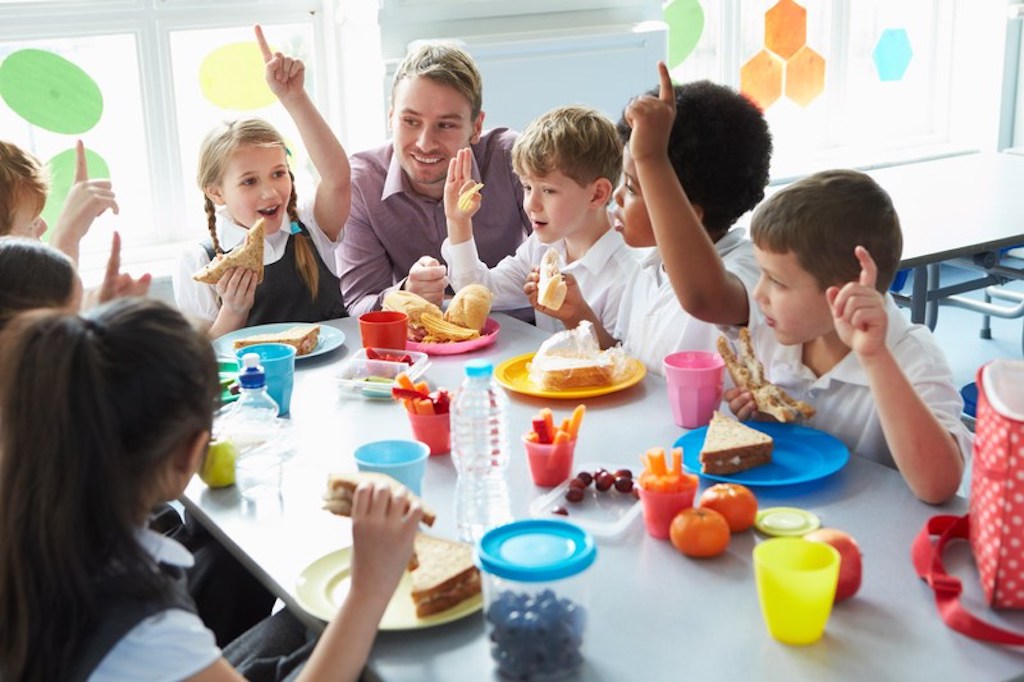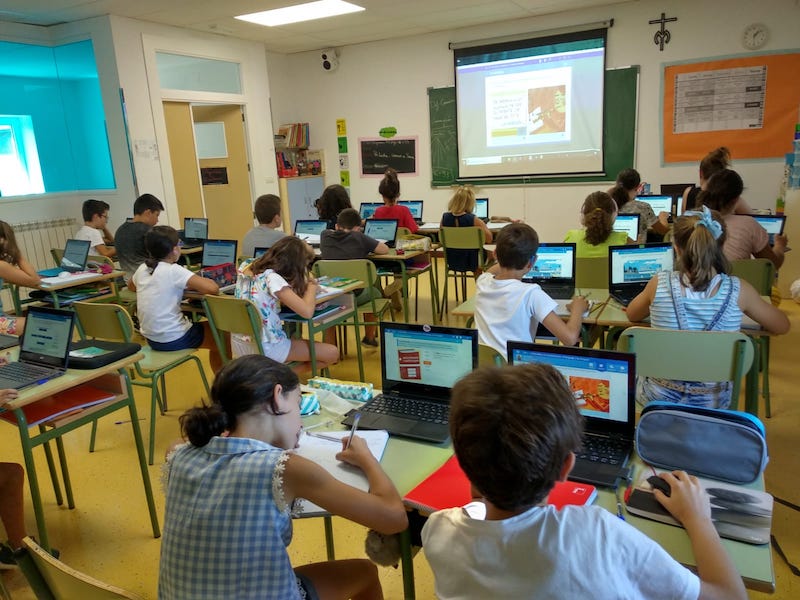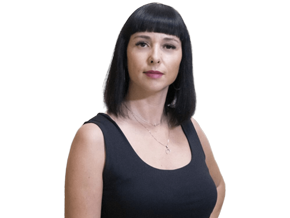School education in Spain is a little different from educational standards of the UK. However, foreign children are surprisingly quick to adapt to the realities of Spanish schools, master the new program and often become one of the best students.
The school schedule entails three terms per year, each term being 11 learning weeks. Usually the school year begins in the middle of September and ends in the middle of June. After the first trimester in December, students will have a two-week Christmas vacation (Vacaciones Escolares). The second trimester begins on January, 6 immediately after the Day of the Magi (Festividad de los Reyes Magos) and ends before Easter (Pascua) in March or April. The third trimester begins after two weeks of the Spring Break, finally all that ends with the traditional summer vacation of 10-11 weeks.
The education system in Spain – in brief

The Spanish education is divided into several cycles, by analogy with the GB system it looks like this:
- Foundation stage (including nursery) – Education Infantil (from 0 to 6 flight);
- Primary school – Educación Primaria (from 6 to 12 flights);
- Secondary school – Educación Secundaria obligatoria (from 12 to 16 years);
- High school (Sixth Form College) – Bachillerato (from 16 to 18 years).
Foundation stage system in Spain – Educación Infantil

It is divided into two cycles: Escuela Infantil or guardería from 0 to 3 years, and Educación Infantil 3 to 6 years.
Escuela infantil or guardería – resembles the British nursery, Early years. Children between 0 and 3 years of age are accepted here. This cycle of education is not obligatory and educational centers that provide this service (even public ones) are fee-paying. The fee is €60 – €100 per month. «comedor» (canteen) should be paid for separately, about €90 − €120 per month. Fee subsidy is available for families with insufficient income and for large families. In this case, the amount of the discount for the services of «guarderia» will be calculated depending on the financial situation of the family, until full financing by the state – so you don’t have to pay anything.
In the «guardería» children are usually held from 9.00 to 13.00, then there is a break for lunch. Children who are registered for «comedor» stay in the school, other kids are picked up home and, if desired, come a second time in the evening – from 15.30 to 17.00 (indicative timetable).
Here children are prepared for school, they develop communication skills, learn self-reliance, and acquire the basic knowledge that is required to enter a primary school (primaria).
There are also private kindergartens that are more expensive to attend. Many private schools offer education from 0 years old using modern methods. In addition, children in such centers learn several languages at a young age.
Educación Infantil. This cycle is intended for children from 3 to 6 years. The educational stage begins at the age of three, although the first three years (that’s how long Educación Infantil cycle lasts) are more like a kindergarten than a school. However, children get a good foundation for their further education and continue to improve their socialization skills.
The schedule at this stage is the same as in the entire school. It is worth noting that previously the school schedule of the Valencian community, to which Torrevieja belongs, was as follows: from 9.00 to 13.00 or 12.30, then a lunch break (children enlisted in «comedor» stay in school), and after that have a couple of lessons from 15.30 to 17.00. Then schools began gradually to switch to other schedule: lessons from 9.00 to 14.00, without evening classes. Lunch time is from 14.00 to 15.30, and additional classes (optional) are from 15.30 to 17.00. \
This means, now a child can be picked up from school at 14.00, and there is no need to take him to classes in the evening, but it is possible to leave him for «comedor» and additional classes until 17.00. In addition, many schools have classes from 17.00 to 18.00 for additional fee.
School education in Spain – Educación Primaria

Educación primaria in Spain is intended for children from 6 to 12 years, i.e. through grades 1-6. Children usually continue to study at the same school where they completed the cycle of preschool education from 3 to 6 years, but they change the class teacher (tutor/tutora).
If the classes are too large, they can be divided into smaller classes. It is also common to mix classes. This is done to improve communication skills, so that children do not break up into smaller marginalized groups. Some schools do that every two years. They can change the class teacher every couple of years to achieve similar goals. The program tends to get complicated every year, and the requirements become more stringent and complex. The schedule remains the same as in the previous stage.
School education in Spain – Educación Secundaria obligatoria
This cycle is intended for children from 12 to 16 years old. If this about public schools, students of this stage almost always go to the high school (instituto). As a rule, both who take the bachillerato course and those who get the professional education also study in the same building. The schedule changes: children study from 8.00 to 14.00. Sometimes schools offer additional classes, as well as extended classes for kids who have problems with certain subjects.
As for private schools, the vast majority of them offer a full cycle of education, which means that children stay in the same school, only the building can change.
After this stage, the student has a choice: go to high school or take a course of secondary special education (formación profesional) and get a profession.
School education in Spain – Bachilleratо
Bachillerato is an equivalent of the Sixth Form (high school) in the UK. This cycle lasts for 2 years, and it is taken by students who are planning to enter universities. During the second year of Bachillerato, the curricula consists of one of three specializations: art, science and technology or humanities. In the second year, the students choose their main specialization. The result of the Bachillerato final exam is very important: the higher the total score, the more likely the student will enter the desired university.
School education in Spain: types of schools

There are three types of schools in Spain:
Public schools (Colegio público)
Education in these schools is free of charge. According to Spanish law, every child living in this country has the right to basic education free of charge, so everyone can go to public school, even children of illegal immigrants. To enroll a child in a school is required:
- certificate of collective registration (certificado de empadronamiento colectivo);
- medical certificate of good health issued by Spanish doctor. For example, to enroll in a school in Torrevieja, it is necessary contact
Concejalía de Educación. Here students are assigned to schools depending on their registration and availability. The official deadline for submitting documents is May. However, by applying in other months your child will be accepted into a school too, but what the school – will depend on availability at the time. If you don’t like the alternatives, you have to wait until next May to apply to another school.
Semi-private school (Colegio concertado)
They are often religious institutions but there are some exceptions. These educational institutions are partly subsidized by the government, and tuition is on a fee-paying but not very expensive – €25 – €100 per month, except for «comedor», the costs of school materials, uniform, transport, etc. It is possible to apply for subsidies. School enrolment is conducting in May, and places are almost always limited, so it will be difficult to enter such a school in the middle of the school year. The level of discipline in such schools is much higher than in public schools. Students wear school uniforms. There are separate schools for girls and boys. Some of them do not have standard textbooks, which are replaced by a tablet.
Private school (Colegio Privado)
This option is the best for those who want to provide their children with an education of the highest quality. There are quite a lot of types of private schools in Spain: British, Spanish, international, etc. Graduates of these schools successfully enter the best universities and are fluent in several languages. The ideology of these schools is to contribute the development of the best skills of the child, his talents, as well as the entrepreneurial spirit, teamwork, and moral qualities. The cost of education in private schools in Spain starts from €500 per month (depending on the school, year of study, etc.), not including the cost of «comedor», school uniforms, transport, etc. Unfortunately, this education is not subsidized by the Government – the schools are completely private.
What subjects are on the curriculum in Spain

Core subjects in Spanish schools are: mathematics, Spanish (Castilian), natural science, social science, physical education, music, foreign language (usually English), fine arts, music (flute).
If they so wish, students can attend religious classes. Sometimes there are two official language in some Autonomous communities (for example, in the Valencian community – Valencian, in Catalonia – Catalan, etc.), which is also studied, and at a high level. In many schools, some subjects are taught in local languages. There is no literature lesson as such, but it is studied into other disciplines. The programs in private schools are more extensive. Children often learn several foreign languages and they are taught both in Spanish and English.
Educational system in Spain: fun facts
Casual style forever!
Uniform is not nicely welcomed in Spanish public schools. The schoolchildren choose to wear their own comfy clothes: T-shirts and jeans, shorts and skirts, trainers and sandals. The teachers are on a par with their pupils and dress quite freelier than their colleagues in the UK. Сomfort comes first!
First name for friends and teachers
All teachers can be called by their first names – Why go to the trouble with titles like “Miss/Señora” or “Sir/Señor”? The teacher and his students have to be on the same wavelength!

A greeting ceremony
All teachers call each other and their students by their first names … but that’s not the whole story! They сan easily hug and kiss the schoolboy/schoolgirl/colleagues – what’s the big deal? Two kisses on the cheek by greeting are quite common and even when it comes to the Spanish colegio: a new foreign student can be kissed by every teacher on his first day of school and enjoy a friendly attitude.
Be calm, just be calm!
«Discipline is our first priority!» That’s something you’ll never hear from the teacher in Spain. He will never scream at a child and detentions after classes have no place here. The students seem to be a little sassier as a result, but they are also more quiet and relaxed.
Wheely friend
All the kids just adore bags on wheels of all colours and sizes like travel suitcases, in which they move their books to and from school. Though some prefer to leave educational material in the classroom.
Siesta in school – Why not?
Schools in the UK have a shorter school day than those in Spain. Usually here lessons start at 9 and end at 5 p.m. or at 2 p.m., if a child have lunch at home. There is a two-hour break for lunch from 1 to 3 p.m. and students can relax while enjoing food or reading something in the park and at the same time teachers can make a coffee break.

Sweet Life
Children’s birthdays – it’s a sacred thing! Leave them without sweets on such days − it would be a crime! The staffroom often has a cake, bonbons or a biscuit box on the table, if an unscheduled celebration occurs.
Speaking of fiestas…
The holidays celebrated here are of great variety. To dive into the enchanting world of your childhood’s favorite fests – that’s real easy – schools celebrate both Halloween and Christmas. And there are other – traditional local festivals like Festividad de los Reyes Magos, Las Fallas, Fiesta de San Juan – and many, many others.
Day after day
In most Spanish schools, escuala infantil, primaria and secundaria are all joined together. This suggests the kids stay at the same colegio from 3 years old right up until they leave at 18. In the end, teachers and students really get to know each other for a long time, creating a tight-knit team, friendly atmosphere in the school, which is so lovely to be a part of.
You can also read our article Spain with children: which city is better to pick for life?




